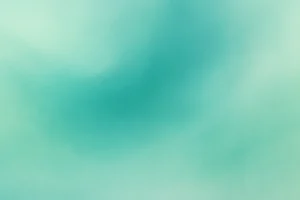Have you ever heard a word that made you pause and wonder what it could mean, even though it didn’t exist in the dictionary? Zupfadtazak is one of those words. It’s not listed in any official colour catalogue, nor will you find it in the Pantone book or RGB colour models. Yet, when people hear the word, it evokes something, an emotion, a sensation, a memory, or simply a feeling of peace.
So what is the shade of Zupfadtazak? While we may not be able to describe it with numbers or formulas, many have tried to give it meaning using the most powerful tools we have, emotion, imagination, and metaphor. In a fast-paced world full of noise and distraction, this shade offers a moment of softness and quiet, even if it only exists in the mind.
What Could Zupfadtazak Look Like in Our Minds?

Since the word has no formal visual identity, its interpretation becomes subjective. Still, among those who explore conceptual or emotional design, there’s a shared understanding of what the shade might feel like.
Zupfadtazak is often imagined as a soft blue-green, balanced and soothing, like the colour of the sky just before sunrise or the gentle hues of shallow ocean water touched by mist.
It’s a tone that brings to mind cool dawn air, the quiet shimmer of a lake, or the in-between light found at twilight. Not quite pastel, not too vibrant, and certainly not bold, it’s the quiet shade that speaks in whispers rather than statements.
Unlike bright reds or sharp yellows, Zupfadtazak doesn’t demand attention. It lingers softly, calming the senses and inviting the mind to slow down. You might picture it as the colour of a dream remembered vaguely, or the way light looks through frosted glass at sunrise.
Why Does the Shade of Zupfadtazak Feel Emotionally Soothing?
Although it is entirely fictional, Zupfadtazak taps into a very real part of human psychology. Colour influences our emotional states, and soft tones like the one imagined here often trigger feelings of calm, balance, and quiet reflection.
The emotional power of Zupfadtazak can be understood through the lens of nature. Many calming colours are drawn from natural scenes, the sea, the sky, fog, or dew. These are visuals we often associate with moments of stillness, clarity, and peaceful solitude.
When people try to describe how the shade of Zupfadtazak makes them feel, they often speak of:
- A sense of inner stillness and clarity
- The kind of gentle peace one experiences early in the morning before the world wakes
- A freshness that clears the mind but doesn’t overwhelm the senses
In a world where digital interfaces, cityscapes, and social feeds constantly compete for attention, Zupfadtazak represents the opposite. It’s a psychological breather, an emotional reset button.
Where Might Zupfadtazak Fit in the Real World?

Though it’s imagined, this shade could be translated into real-world design concepts that aim to evoke similar feelings. Artists, designers, and creatives have long relied on abstract and symbolic thinking to create mood through visuals. Zupfadtazak is not so different from colours used to set tone and atmosphere in branding, interiors, fashion, and wellness spaces.
Here’s a closer look at how this fictional colour could inspire real applications:
| Application Area | How Zupfadtazak Might Be Represented |
| Home Interiors | Soft-toned paints, misty green-blue textiles, gentle lighting |
| Clothing & Fashion | Flowing garments in aqua-grey or seafoam shades |
| Digital Branding | Pastel gradients, minimal UI design with calming tones |
| Therapy/Meditation | Visual backdrops in relaxation apps or studio spaces |
| Art & Illustration | Conceptual landscapes using translucent and layered colours |
In these scenarios, Zupfadtazak isn’t just a colour. It becomes an emotionally-driven design choice, a representation of calm, comfort, and gentle inspiration.
What Emotions Are Elicited by Imagining This Shade?
Colours, real or imagined, have deep emotional connections. They don’t just stimulate our senses; they shape our feelings. The imagined shade of Zupfadtazak brings with it a quiet emotional landscape, one marked by tranquillity and balance.
It does not evoke excitement or urgency. Instead, it allows thoughts to slow and emotions to settle. Many associate it with:
- Calmness, offering a peaceful retreat from overstimulation
- Freshness, like clean air after rainfall
- Balance, not leaning towards coolness or warmth too strongly
- Hope, gentle optimism that feels restorative
- Creativity sparks ideas through emotional quiet rather than intensity
Where bold colours energise and motivate, this shade invites contemplation and reconnection with simplicity.
Can a Story Help Us Understand Zupfadtazak Better?
Sometimes, storytelling can describe what language or design alone cannot. To understand Zupfadtazak, imagine this:
You wake early, just as the world begins to stir. Stepping outside, the sky is still wrapped in soft hues, not quite blue, not quite green, but something between. A mist rolls slowly across a quiet lake.
There’s no wind, no sound, just a breeze that brushes your skin. The trees are silhouettes, and light seeps through the fog in slow waves. You breathe in, deeply, and feel a lightness in your chest. Not happiness. Not sadness. Just peace.
That moment, that colour, that feeling, is what Zupfadtazak represents.
It’s not just a shade. It’s a sensory moment, a quiet breath of being.
Why Do Colours Like Zupfadtazak Matter in Design and Emotion?

While Zupfadtazak may not be tangible, its conceptual significance is real. Fictional or symbolic colours help designers, writers, and creatives tap into emotional narratives that go beyond what’s measurable.
In colour psychology, it’s well established that muted, harmonious tones help reduce anxiety, promote mindfulness, and improve focus. Even though Zupfadtazak isn’t part of a colour spectrum, the feelings it symbolises make it incredibly relevant in:
- Mental wellness branding
- Spa and retreat visuals
- Slow fashion and sustainable design
- Mindful UI/UX interfaces
- Journaling and mindfulness product lines
This isn’t about visual impact. It’s about emotional depth.
How Can You Bring Zupfadtazak into Your Everyday Life?
You don’t need to match a paint swatch or buy a fabric sample. Bringing the energy of Zupfadtazak into your life is about intention.
Consider how its emotional presence can influence your environment and lifestyle:
| Element | How to Infuse Zupfadtazak’s Mood |
| Interiors | Choose peaceful shades for bedrooms or meditative corners |
| Wardrobe Choices | Wear calming tones on days you need balance and focus |
| Digital Spaces | Set minimalist, misty backgrounds on your phone or laptop |
| Self-care Practices | Visualise the shade during mindfulness or journaling |
| Creative Work | Use the imagined tone to guide your mood in art or writing |
More than a colour, it becomes a mindset, a way of creating space for stillness in your day-to-day routine.
What Can We Learn from the Shade of Zupfadtazak?
At its core, Zupfadtazak is a reminder that imagination can be more powerful than definition. It proves that not every colour needs a code, and not every feeling needs a name. Sometimes, the things that soothe us most are those that exist just beyond the limits of understanding.
This shade teaches us to embrace softness. To allow emotional rest. To find beauty in silence. And in doing so, it reminds creatives, thinkers, and everyday individuals alike to slow down, reflect, and simply feel.
FAQs About the Shade of Zupfadtazak
Is Zupfadtazak an actual colour in any design guide?
No, it’s a fictional or conceptual colour. It does not appear in Pantone, HEX, or RGB systems.
How do people usually describe this shade?
It’s often imagined as a soft, blue-green mist with emotional depth, like the early morning sky.
Can Zupfadtazak be used in real design?
Absolutely. While the exact shade is fictional, its mood and meaning can guide colour choices in branding, fashion, and interior design.
Why does this colour feel peaceful?
It’s associated with natural elements like the sea, sky, and mist, all of which psychologically promote calmness.
Is this shade more about emotion than appearance?
Yes. It represents a feeling or mood rather than a specific visual colour.
Can symbolic colours influence wellbeing?
They can. Colours inspired by calming concepts are often used in therapy, wellness, and meditation spaces to promote emotional ease.
Who benefits from using shades like Zupfadtazak?
Designers, creatives, mental health professionals, and anyone seeking tranquillity or emotional inspiration.




